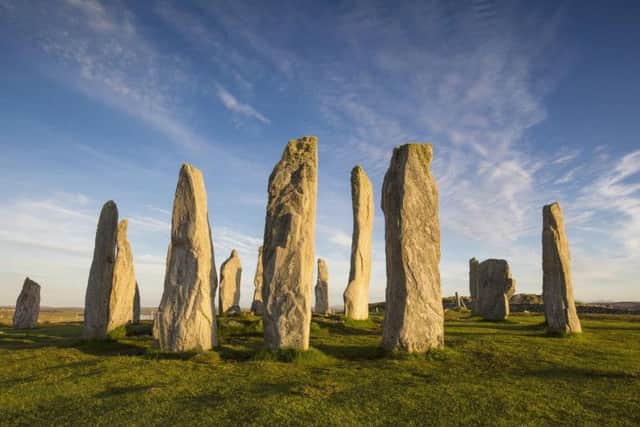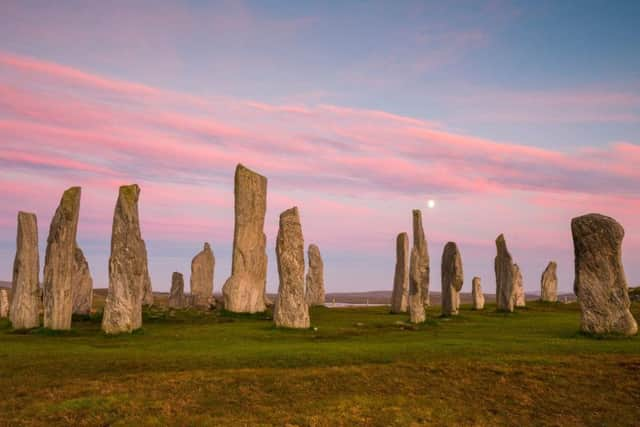New evidence reveals what inspired ancient stone circles on Isle of Lewis
Scientists studying a prehistoric stone circle on the Outer Hebrides island discovered evidence of a lightning strike on a nearby site where a circle had been hidden beneath a peat bog.
Just one stone remained standing at the site, known as Site XI or Airigh na Beinne Bige, which overlooks the main stone circle, Tursachan Chalanais, at Calanais on the Isle of Lewis.
Advertisement
Hide AdAdvertisement
Hide AdBut it is believed that the single stone was once part of a circle of standing stones, and that a massive star-shaped 'magnetic anomaly' in the centre signified where it had been struck by lightning.


Scientists from the University of St Andrews and the University of Bradford plan to extend their research to surrounding areas which have been flooded by rising sea levels.
Another 'lost' circle, known as Na Dromannan, was recreated by academics who created a 3D model, allowing the passage of the sun and moon around this circle to be tracked for the first time in four millennia.
Project leader Dr Richard Bates, of the School of Earth and Environmental Sciences at the University of St Andrews, said: "Such clear evidence for lightning strikes is extremely rare in the
UK and the association with this stone circle is unlikely to be coincidental.


"Whether the lightning at Site XI focused on a tree or rock which is no longer there, or the monument itself attracted strikes, is uncertain.
"However, this remarkable evidence suggests that the forces of nature could have been intimately linked with everyday life and beliefs of the early farming communities on the island."
Dr Tim Raub, of the School of Earth and Environmental Sciences at the University of St Andrews, added: "This evidence is rare because lighting strikes are conducted along the top 'skin' of the Earth's surface.
Advertisement
Hide AdAdvertisement
Hide Ad"The clarity of the strike suggests we are looking at events before the peat enveloped the site, more than 3,000 years ago."
Dr Chris Gaffney, of the School of Archaeological and Forensic Sciences at the University of Bradford, said: "Evidence for such strikes within archaeological surveys is very rare and our work at Site XI demonstrates that without detailed scientific survey we would never be able to identify such events."
Professor Vincent Gaffney of the School Archaeological Sciences at the University of Bradford, said: "The dramatic results of survey on Lewis demonstrate that we have to understand the landscapes that surrounds these ritual monuments and the role that nature and natural events, including lightning, played in creating the rituals and beliefs of people many thousands of years ago."
Dr Alison Sheridan, Director of Urras nan Tursachan, the Calanais based charitable trust that partnered this research, said: "This is a thrilling discovery that helps us get inside the minds of the people who built the stone circles at and around Calanais.
"There is much still to find out about the so-called 'satellite' circles of Neolithic Calanais and this provides an important first step.
"The modelling of Na Dromannan also helps us investigate whether this circle was astronomically aligned."